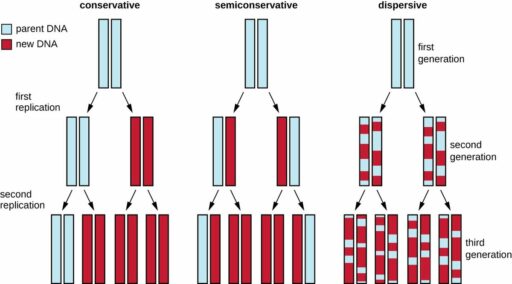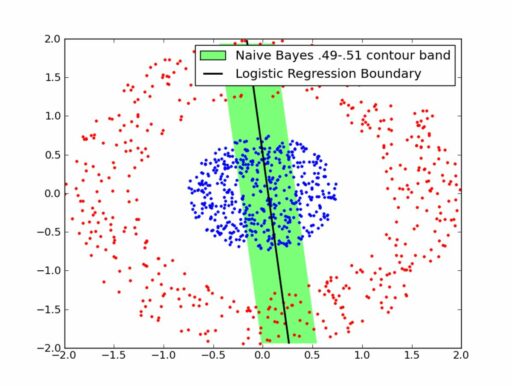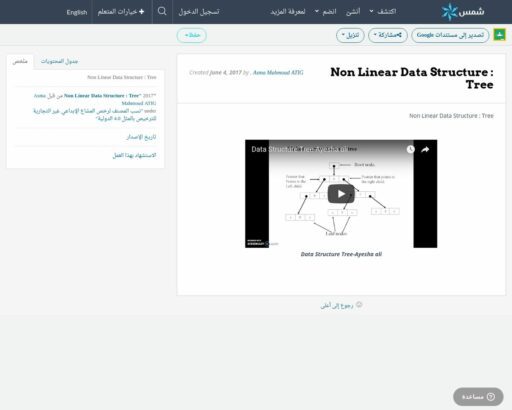Table of Contents
In the realm of data analysis and statistics, understanding the difference between discrete and continuous data is fundamental for accurate interpretation and decision-making. Discrete data can be counted in whole numbers and is characterized by distinct, separate values, whereas continuous data represents measurements that can take on any value within a range, often including fractions and decimals. This article delves into the definitions, characteristics, examples, and practical implications of these two types of data, providing insights that are crucial for professionals who rely on data-driven strategies.
Key Takeaways
- Discrete data consists of countable, separate values, typically represented by whole numbers, and is not divisible into smaller parts.
- Continuous data is measurable, can take on any value within a given range, and includes fractions and decimals, representing a continuum of values.
- The core distinction between discrete and continuous data is that discrete data is counted, while continuous data is measured.
- Understanding these differences is critical for statistical analysis, as it influences the choice of visualization methods and statistical models.
- In practice, recognizing whether data is discrete or continuous aids in accurate data analysis and supports performance insights in fields such as marketing.
Fundamentals of Discrete and Continuous Data

Defining Discrete Data
Discrete data is a type of information that can only assume specific, separate values. It is countable and distinct, with each value having a clear and separate existence. This kind of data is typically represented by whole numbers and cannot be meaningfully divided into smaller parts or fractions.
Discrete data is characterized by its limitation to certain values. These values are often whole numbers that fit into specific categories and are not capable of being subdivided.
For instance, the number of students in a classroom, the number of cars in a parking lot, or the number of books on a shelf are all examples of discrete data. Each of these can be counted in whole units and does not exist in a fractional or decimal form. Here’s a simple representation of discrete data categories:
- Number of items (e.g., books, cars, students)
- Occurrences of events (e.g., number of sales, arrivals, departures)
- Scores or points (e.g., test scores, game points)
Probability distributions play a crucial role in statistics. Discrete probability distributions have finite outcomes and sum to one. Examples include Binomial, Geometric, and Poisson distributions.
Understanding Continuous Data
Continuous data is characterized by its ability to take on any value within a given range. Unlike discrete data, which is limited to distinct and separate values, continuous data can be measured with precision and can occupy any value over a continuous range. Continuous data is information that could be meaningfully divided into finer levels. It is not restricted to defined separate values, but rather, it can represent measurements that are infinitely divisible, allowing for an extremely detailed level of analysis.
For instance, consider the following examples of continuous data:
- The temperature in a room throughout the day
- The height of individuals measured to the nearest millimeter
- The time it takes to complete a task, measured in seconds
Continuous data is only limited by the practical volume of the data or the specificity of the measurements in question. This flexibility in measurement makes continuous data particularly useful for precise calculations and modeling in various fields such as science, engineering, and economics.
When representing continuous data graphically, line graphs and trend lines are commonly used. These visual tools effectively illustrate the fluid nature of continuous data, showing how it changes over time or in response to different variables.
Counting vs. Measuring: The Core Difference
The distinction between discrete and continuous data hinges on the methods of quantification. Discrete data is inherently countable, often represented by whole numbers, and is associated with items that can be individually separated and counted. For example, the number of students in a classroom or the number of cars in a parking lot are discrete because they can be counted directly.
Continuous data, in contrast, is measured and not countable in the traditional sense. It represents quantities that can take on any value within a range, such as the length of a piece of wood or the time it takes to run a race. These measurements are often expressed in fractions or decimals to capture the precise value.
The core difference lies in the nature of the data: discrete data can be enumerated, while continuous data requires measurement to determine its value.
Understanding this fundamental distinction is crucial for selecting the appropriate statistical methods for analysis. Here’s a simple table to illustrate the differences:
| Data Type | Countable | Measurement Required | Examples |
|---|---|---|---|
| Discrete Data | Yes | No | Number of books |
| Continuous Data | No | Yes | Temperature in Celsius |
Recognizing whether data is discrete or continuous informs how we approach data collection, analysis, and interpretation.
Characteristics and Examples of Discrete Data

Nature and Properties of Discrete Data
Discrete data is characterized by its distinct and separate values, which are countable and often represent whole numbers. It is impossible to divide discrete data into smaller parts without losing its meaning. For example, the number of students in a classroom cannot be a fraction; it must be a whole number.
Discrete data is often referred to as categorical data because of the way observations can be collected into categories. This type of data is easily visualized on charts and graphs, making it straightforward to analyze and interpret. Common visualizations include bar graphs and histograms, which are effective in displaying the frequency of each category.
Discrete data encompasses a wide range of other data types, including ordinal data, which can represent rankings or scales, such as ‘bad’, ‘neutral’, ‘good’. It also allows for the quantification of qualitative data, such as counting the number of green cars on a road.
Here is a simple table illustrating the discrete data of colors in a sample of cars:
| Color | Frequency |
|---|---|
| Red | 12 |
| Blue | 9 |
| Green | 5 |
| Yellow | 3 |
The table shows the countable nature of discrete data, where each color represents a separate category and the frequency indicates the number of occurrences.
Real-world Examples of Discrete Data
Discrete data is integral to various sectors, providing critical information for decision-making and operations. In the manufacturing industry, discrete data is essential for counting items, conducting quality checks, and measuring defect rates. For instance, workers may count the number of items produced or use discrete data to determine pass or fail statuses during quality inspections.
In the realm of eCommerce, discrete data underpins inventory management and sales operations. Online retailers rely on discrete data to track the number of orders, maintain accurate product stock levels, and monitor customer ratings. This data is pivotal for optimizing supply chain efficiency and enhancing customer satisfaction.
Education systems also utilize discrete data extensively. The number of students in a classroom, the count of books in a library, and the tally of courses offered are all examples of discrete data that facilitate the administration and organization of educational institutions.
Discrete data is characterized by its numerical, whole, and non-negative nature, making it indispensable for quantifying physical or material entities.
Here is a summary of discrete data examples in different sectors:
- Manufacturing: Item counts, quality checks, defect rates
- eCommerce: Number of orders, products in stock, customer ratings
- Education: Number of students, books, and courses
Visual Representation and Analysis
Visual representation is crucial for interpreting discrete data effectively. Bar charts, histograms, and pie charts are common tools used to illustrate discrete data points. For instance, a bar chart can effectively display the frequency of specific categories, such as the number of green cars observed on different roads.
When analyzing discrete data, it’s important to choose the right type of chart. Here’s a simple guide:
- Bar Chart: Ideal for comparing different categories.
- Histogram: Best for showing frequency distributions.
- Pie Chart: Useful for depicting proportions within a whole.
These visualization methods allow for a clear and concise presentation of data, which is essential for making informed decisions. Whatagraph and similar tools automate the process of data collection and aggregation, presenting the data in an easily digestible visual report.
The choice of visualization technique can significantly impact the clarity and effectiveness of data communication.
Understanding the nature of discrete data and its visual representation is a stepping stone to more advanced statistical analysis methods. It’s the foundation for transforming raw data into actionable insights.
Characteristics and Examples of Continuous Data

Defining the Infinite Nature of Continuous Data
Continuous data is characterized by its ability to take on any value within a given range, not limited to distinct, separate points. Between any two continuous data points, an infinite spectrum of values is possible. This level of detail allows for measurements that are highly precise, extending to as many decimal places as necessary. For instance, weight can be measured as 15kg, or more precisely, 15.02kg, 15.632kg, and so on.
Data normalization is crucial for organizing and transforming unstructured data. It involves removing redundancy, logical grouping, and resolving inconsistencies to facilitate analysis.
The main characteristics of continuous data include its collection from continuous random variables, the potential for an infinite number of values within a range, and the fact that it is measured rather than counted. In some cases, continuous data may be treated as if it were discrete, which can be useful for certain types of analysis or when dealing with large datasets where the level of detail in continuous data is not required.
Practical Examples of Continuous Data
Continuous data is integral to various fields, providing a foundation for precise analysis and decision-making. Meteorology relies heavily on continuous data, such as daily wind speed and freezer temperature, to predict weather patterns and climate changes. In the realm of finance, continuous data is ubiquitous, with exchange rates, stock prices, and bank account balances fluctuating constantly.
In environmental studies, continuous data plays a crucial role. Measurements of air quality, water levels, and soil composition are vital for monitoring ecosystems and predicting environmental impacts. These measurements are often precise down to multiple decimal places, reflecting the infinite nature of continuous data.
Continuous data allows for an in-depth understanding of variables over a range of values, facilitating nuanced insights and informed decisions.
For instance, in a business setting, continuous data encompasses product dimensions and the time visitors spend on a website. Abstract metrics such as productivity or efficiency are also treated as continuous, as they are derived from measurements that can vary infinitely within a given range.
Graphical Representation and Interpretation
The graphical representation of continuous data differs significantly from that of discrete data due to its inherent nature. Continuous data is represented by graphs where data points are connected, forming an unbroken line, indicating that the data can take on any value within a certain range. This is in contrast to discrete data, which is often visualized using bar graphs or histograms that show distinct, separate values.
When interpreting continuous data graphs, the focus is on trends, rates of change, and the smoothness of data variation over a range.
For instance, a line graph can effectively showcase the gradual increase in temperature over a day or the consistent growth of a plant over several weeks. The table below illustrates how different types of graphs are used for continuous data:
| Graph Type | Usage |
|---|---|
| Line Graph | To display data trends and changes over time |
| Scatter Plot | To show the relationship between two continuous variables |
| Histogram | To depict the distribution of data within intervals |
Understanding the appropriate graphical tools and their interpretation is crucial for accurate analysis and communication of continuous data.
Comparative Analysis: Discrete vs Continuous Data

Key Distinctions in Data Types
When delving into the realm of data analysis, recognizing the fundamental differences between discrete and continuous data is crucial. Discrete data is countable and finite, often represented in whole numbers, whereas continuous data can take on any value within a range, including decimals and fractions.
Discrete data is inherently countable and distinct, making it suitable for scenarios where precision and categorization are key. Continuous data, on the other hand, flows without interruption and is essential for measuring and modeling phenomena that change smoothly over time.
Understanding these distinctions is not just academic; it has practical implications in fields ranging from machine learning to data analytics. For instance, SQL and NoSQL databases are essential for storing data, with SQL being relational and NoSQL being non-relational. Both play distinct roles in the processing and analysis of discrete and continuous data, respectively.
Here’s a concise comparison of their characteristics:
- Discrete Data:
- Countable, finite sets
- Represented by whole numbers
- Suitable for categorization
- Continuous Data:
- Can assume any value within a range
- Includes decimals and fractions
- Ideal for measuring and modeling
Impact on Statistical Analysis and Decision Making
The distinction between discrete and continuous data is pivotal in statistical analysis and decision-making processes. Discrete data, being countable and distinct, lends itself to certain types of analysis, such as frequency distributions and probability calculations. Continuous data, on the other hand, allows for a more nuanced understanding of variables through analyses like regression and correlation.
The choice of data type directly influences the statistical methods applied and the precision of the results obtained.
Understanding the nature of the data is crucial for analysts to avoid the pitfalls of overlooking valuable insights. While discrete data can be more straightforward to analyze, it may lead to a narrow focus on numerical relationships, potentially missing the bigger picture. Continuous data analysis often requires more sophisticated methods, but it can provide a deeper level of accuracy and specificity.
Here is a comparison of how discrete and continuous data impact statistical software tools:
| Data Type | Analysis Complexity | Software Adaptability | Result Precision |
|---|---|---|---|
| Discrete | Moderate | High | Specific |
| Continuous | High | High | Very Specific |
Digital vs Analog: A Conceptual Understanding
The distinction between digital and analog is a fundamental concept that mirrors the difference between discrete and continuous data. Digital data is akin to discrete data, where information is represented in distinct units or values. In contrast, analog data corresponds to continuous data, with information expressed in a continuous flow, much like electric pulses of varying amplitude.
- Digital data: Represented in binary format (0s and 1s).
- Analog data: Represented as electrical signals or other forms of continuous wave.
The choice between digital and analog, or discrete and continuous, often depends on the context and the nature of the data being analyzed. For instance, digital data is preferred for computer systems due to its precision and resistance to noise, while analog data is often used in audio recordings to capture the nuances of sound.
The differences are not in the data itself but in how we choose to model and interpret the data.
Navigating the Complexities of Data in Practice

Challenges in Differentiating Data Types
In the realm of data analysis, distinguishing between discrete and continuous data can be a subtle yet crucial task. The complexity arises when data exhibits characteristics of both types, leading to potential misclassification and analytical errors. For instance, time can be recorded as discrete intervals or as a continuous stream, depending on the context and precision required.
-
Discrete Data Challenges:
- Ambiguity in countable units (e.g., fractured quantities)
- Overlapping categories (e.g., age ranges)
- Data that switches context (e.g., digital signals)
-
Continuous Data Challenges:
- Precision and rounding issues
- Infinite divisibility leading to practical limitations
- Measurement errors affecting data integrity
The interplay between discrete and continuous data often necessitates a nuanced approach to classification, where the lines are not always clear-cut. Analysts must exercise judgment and consider the implications of categorizing data one way or another.
Implications for Marketing and Performance Insights
In the realm of marketing, the distinction between discrete and continuous data is pivotal for crafting strategies that resonate with target audiences. Discrete data, such as customer satisfaction scores, can be instrumental in segmenting markets and tailoring campaigns. On the other hand, continuous data offers a lens into nuanced consumer behaviors, revealing patterns that inform product development and positioning.
-
Discrete Data Applications:
- Market segmentation
- Campaign effectiveness
- Customer satisfaction tracking
-
Continuous Data Applications:
- Trend analysis
- Consumer behavior modeling
- Product feature optimization
The integration of both data types enriches the analytical landscape, providing a comprehensive view of market dynamics and consumer preferences. This synergy is crucial for businesses aiming to maintain a competitive edge in a data-driven marketplace.
Best Practices for Data Classification and Usage
In the realm of data analysis, proper classification of data is pivotal for extracting meaningful insights. Discrete data, characterized by its countable nature, is often tabulated or used in frequency distributions. Continuous data, with its ability to take on any value within a range, is suited for more complex statistical analysis.
- Understand the nature of your data: Is it countable or measurable? This will guide your choice of analysis tools.
- Choose the right tools: Use software that can handle the specific complexities of discrete or continuous data.
- Keep it simple: Start with basic analysis and build complexity as needed.
- Verify your findings: Always cross-check results with real-world outcomes to ensure accuracy.
Embracing these practices will not only streamline your data analysis process but also enhance the reliability of your conclusions.
Professionals familiar with these data types can spot situations where the data may be particularly useful. For instance, marketers can use discrete data to count and track campaign performance, while continuous data can help analyze trends and make predictions.
Conclusion
In summary, the distinction between discrete and continuous data is fundamental to understanding and accurately analyzing numerical information. Discrete data is countable and distinct, with values that are fixed and non-divisible, often represented in whole numbers. Continuous data, on the other hand, flows without interruption and can assume any value within a given range, necessitating measurement rather than counting. Recognizing these differences is crucial for professionals in fields ranging from statistics to business, as it influences the choice of analysis methods and the interpretation of results. Whether we count discrete instances or measure continuous variables, the correct identification and treatment of these data types can significantly enhance the precision and relevance of our insights.
Frequently Asked Questions
What is the main difference between discrete and continuous data?
The main difference is that discrete data consists of countable, individualized items with noticeable gaps between values, while continuous data can take any value within a given range and occurs in a continuous series without gaps.
Can discrete data be divided into smaller parts?
No, discrete data refers to countable items that exist in set increments or units and cannot be broken down into smaller parts.
How is discrete data represented visually?
Discrete data is typically represented visually using bar graphs, which display the data as discrete or distinct values.
What is an example of continuous data?
Continuous data includes measurements such as temperature, time, or distance, where any value within a given range is possible and the data forms a continuous series.
Why is understanding the difference between discrete and continuous data important in statistical analysis?
Understanding the difference is crucial for statistical analysis as it impacts how data is collected, represented, interpreted, and used in decision-making processes.
What is a simple way to distinguish between discrete and continuous data?
A simple way to distinguish them is to remember that you count discrete data and you measure continuous data, akin to the difference between digital and analog.





